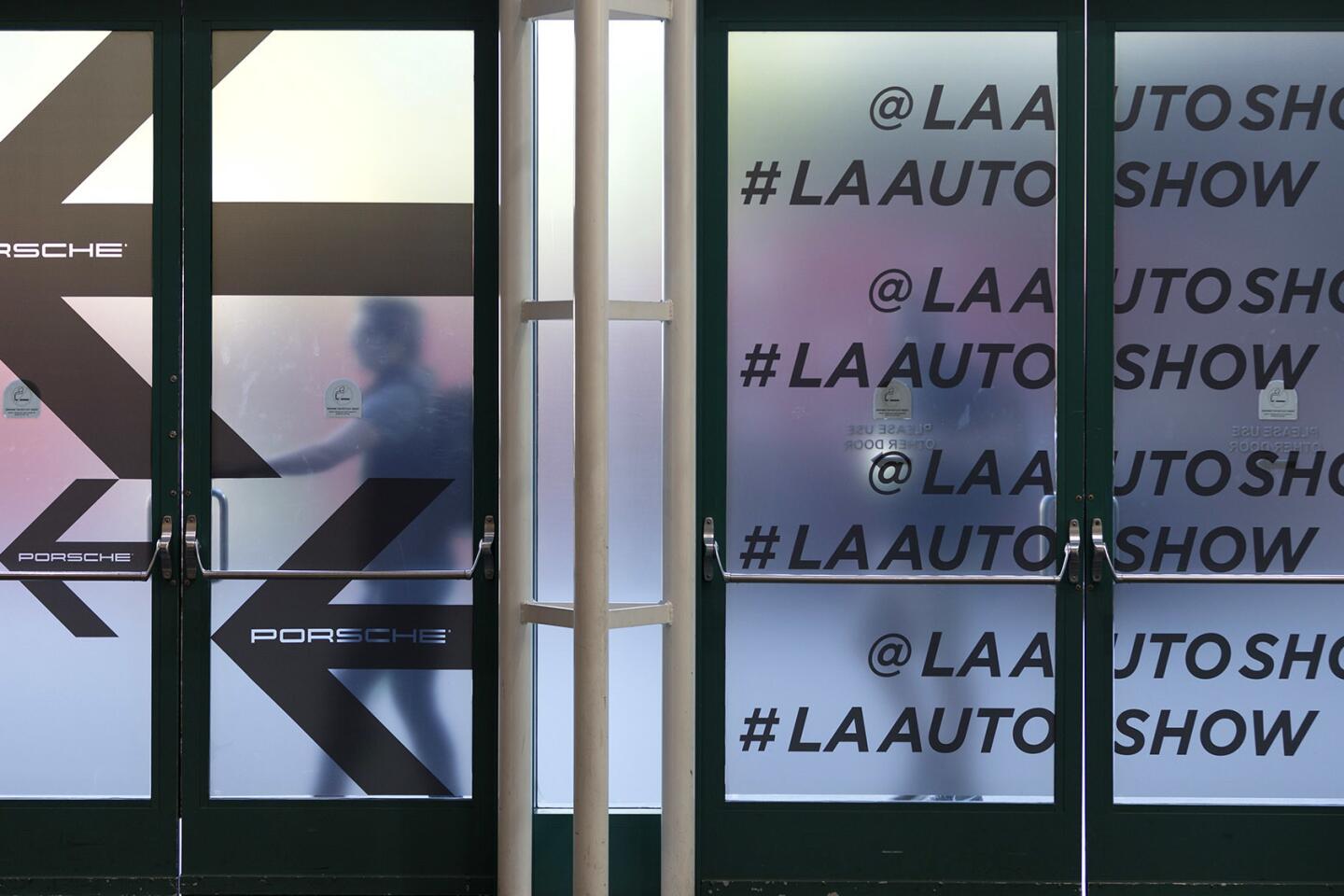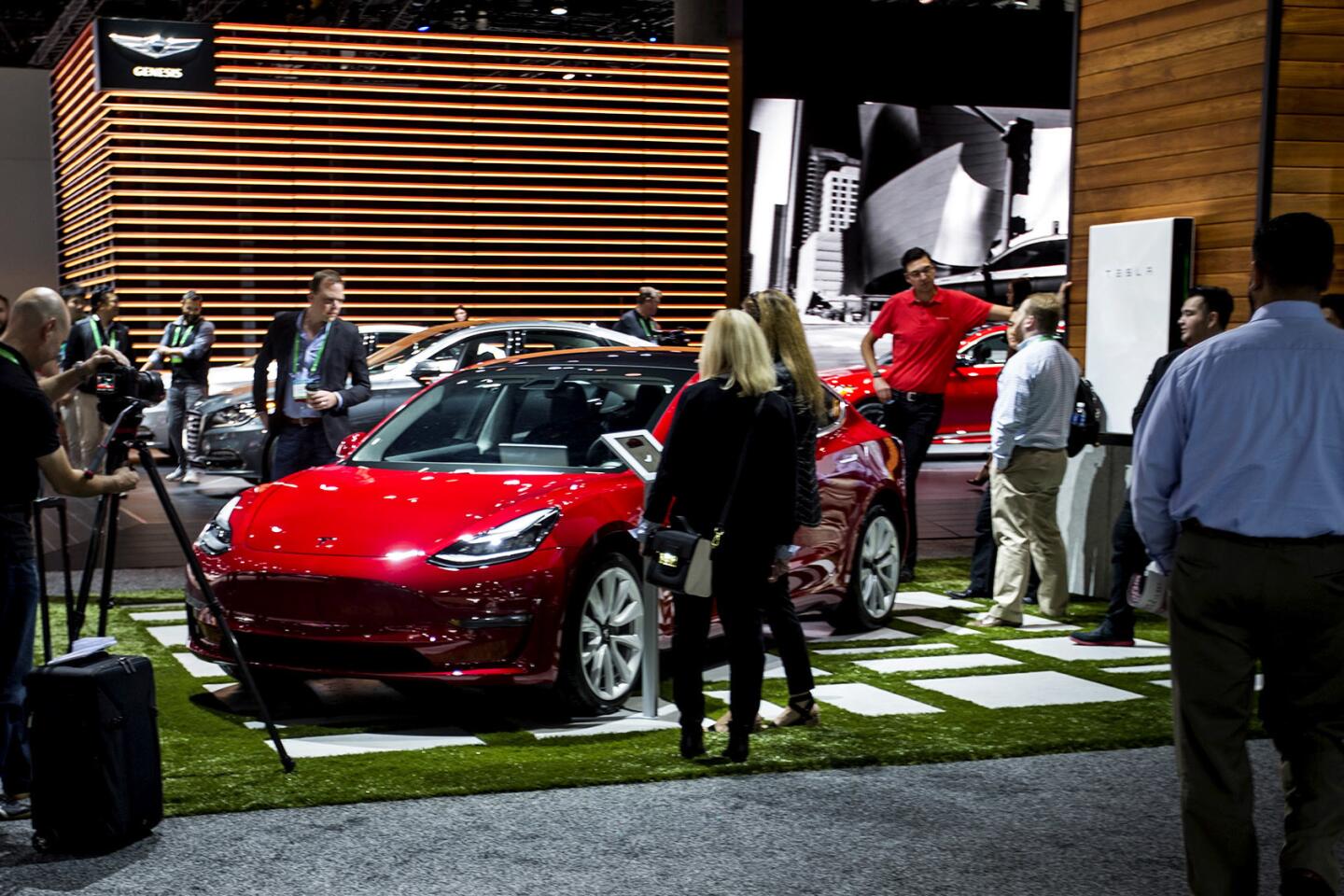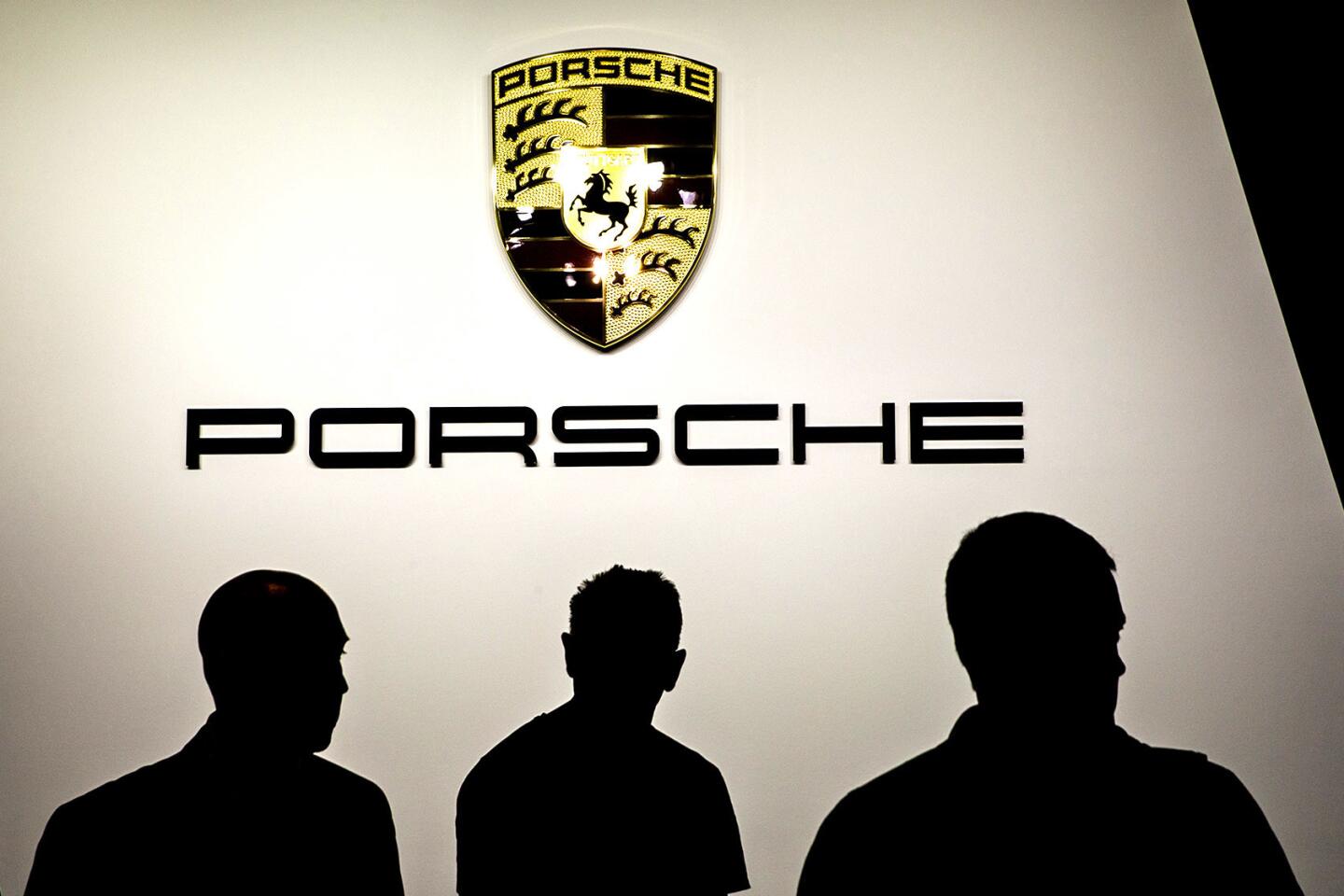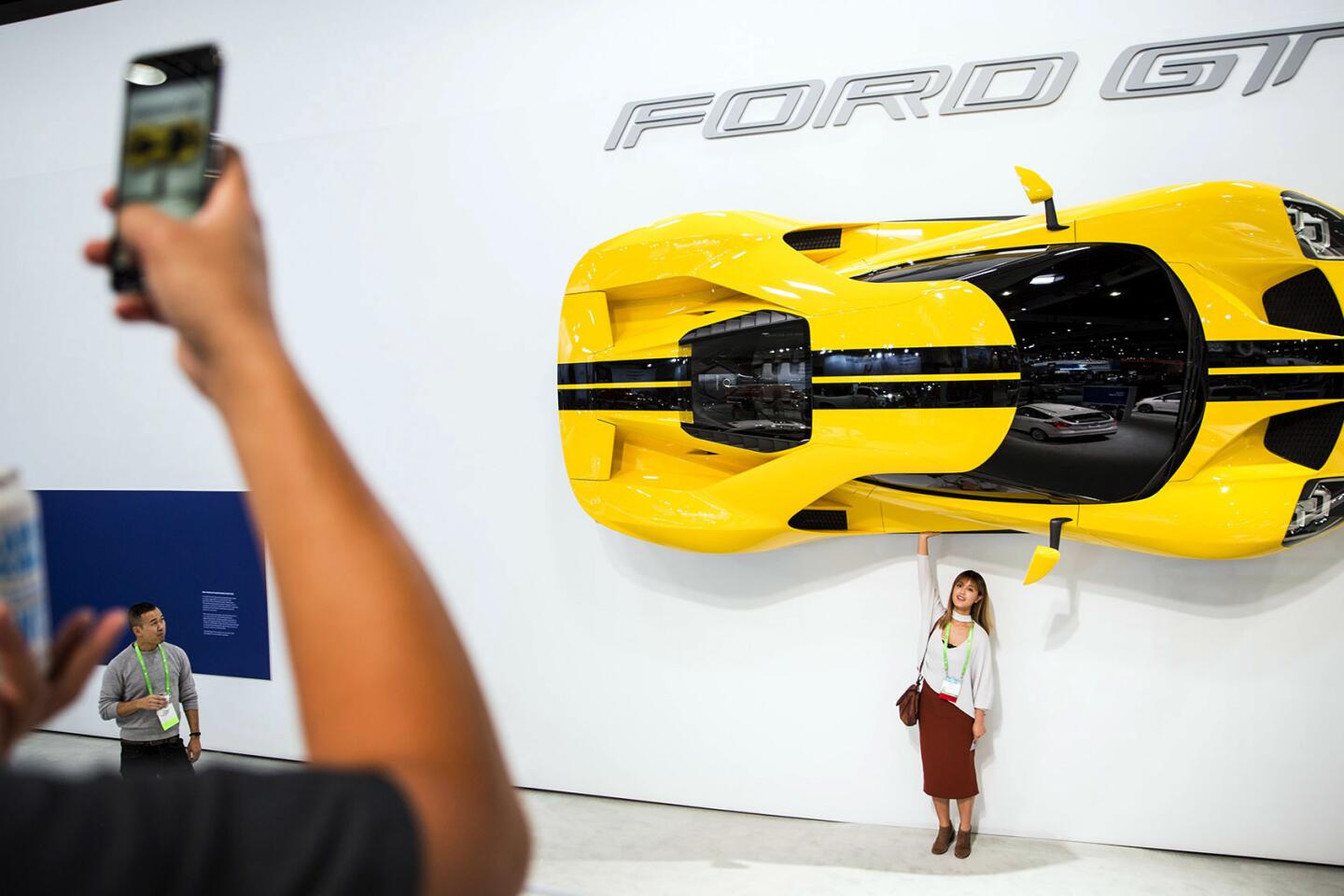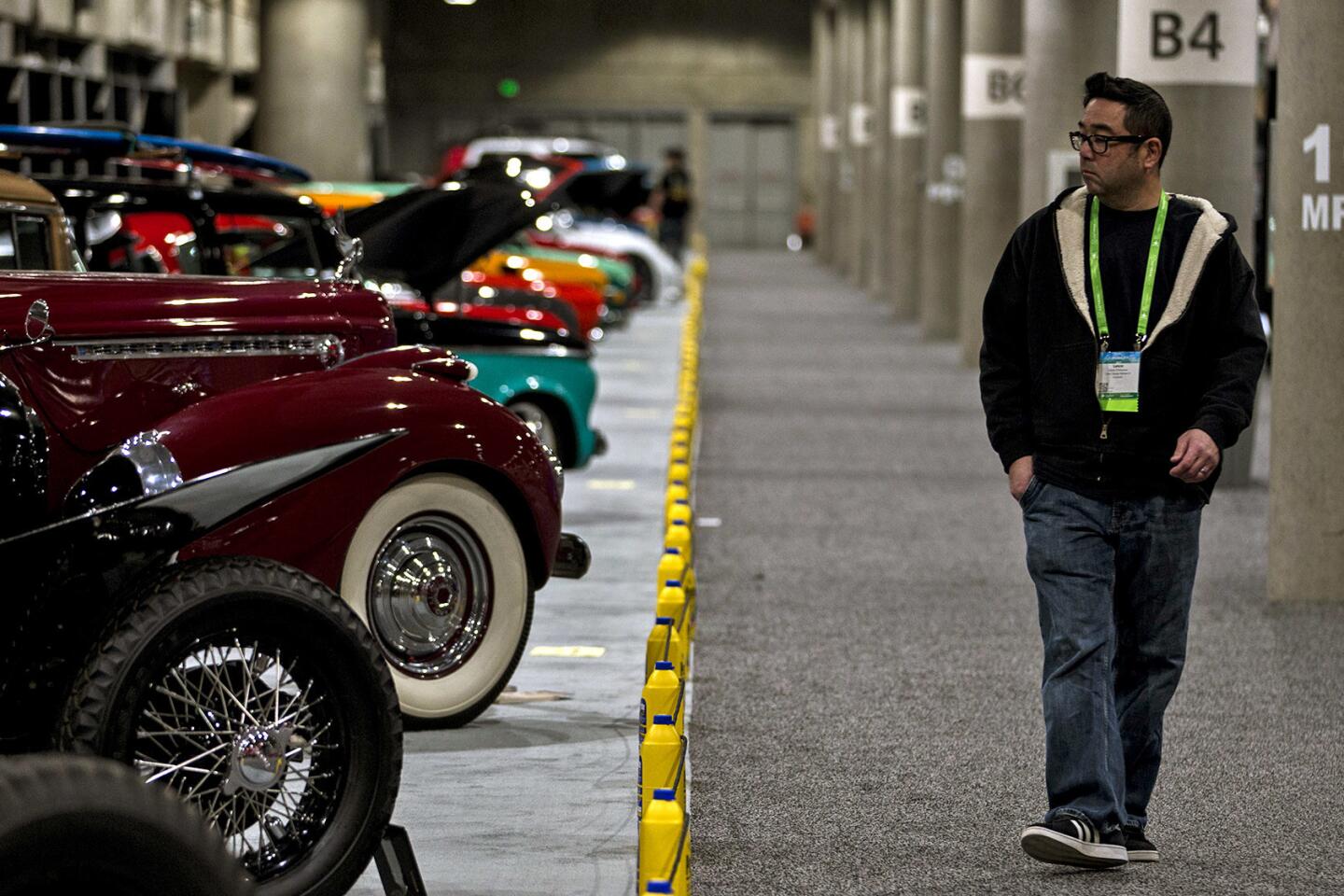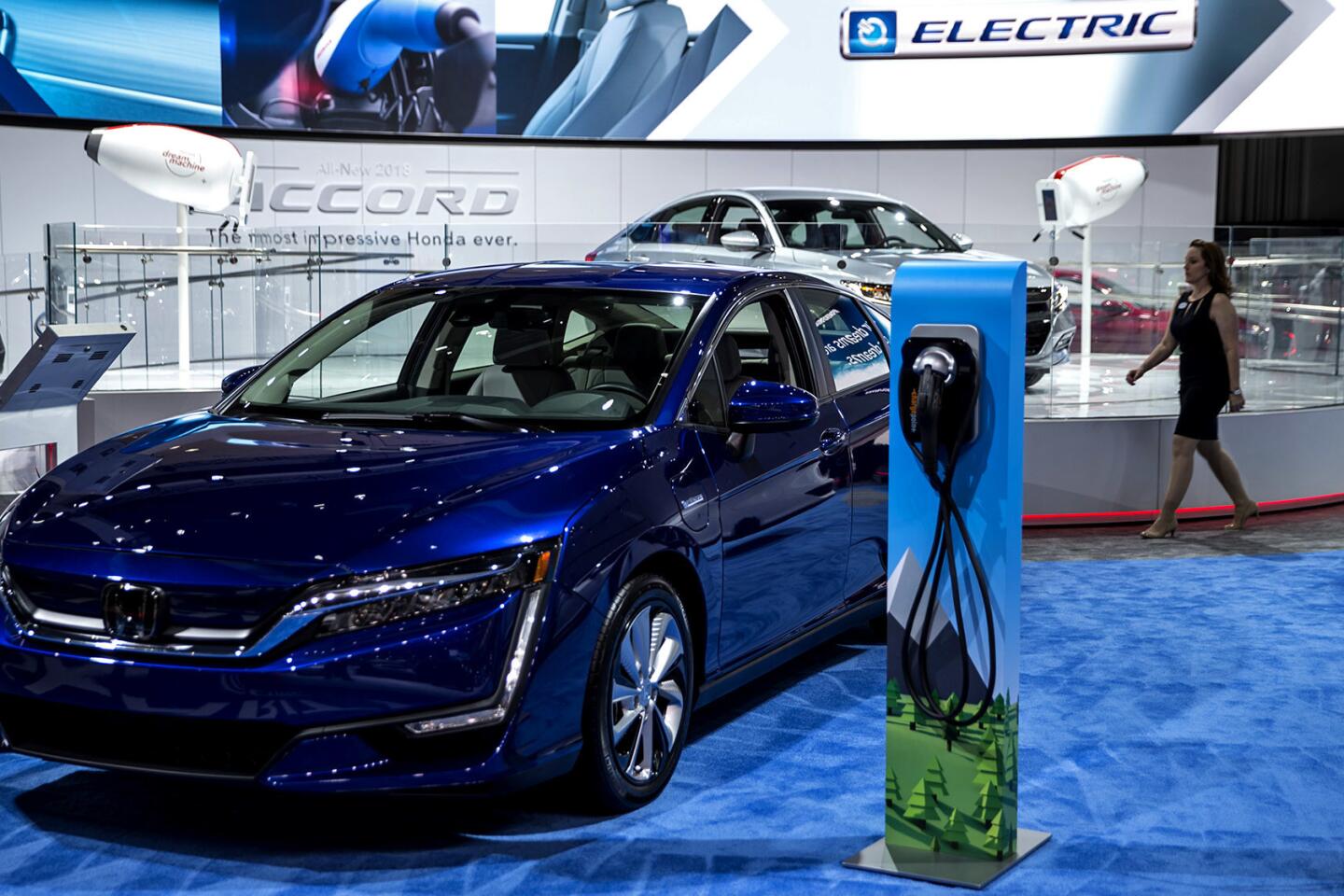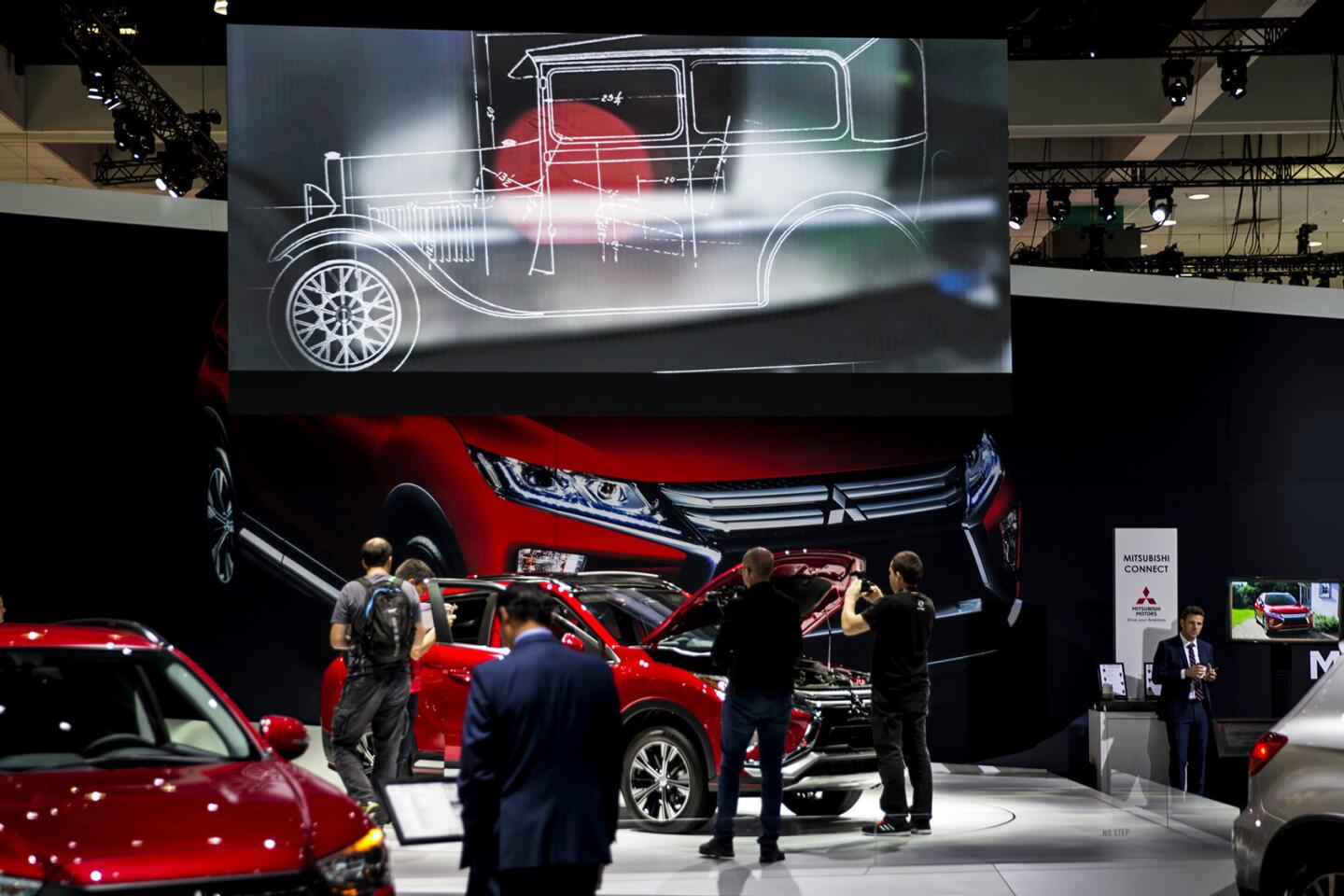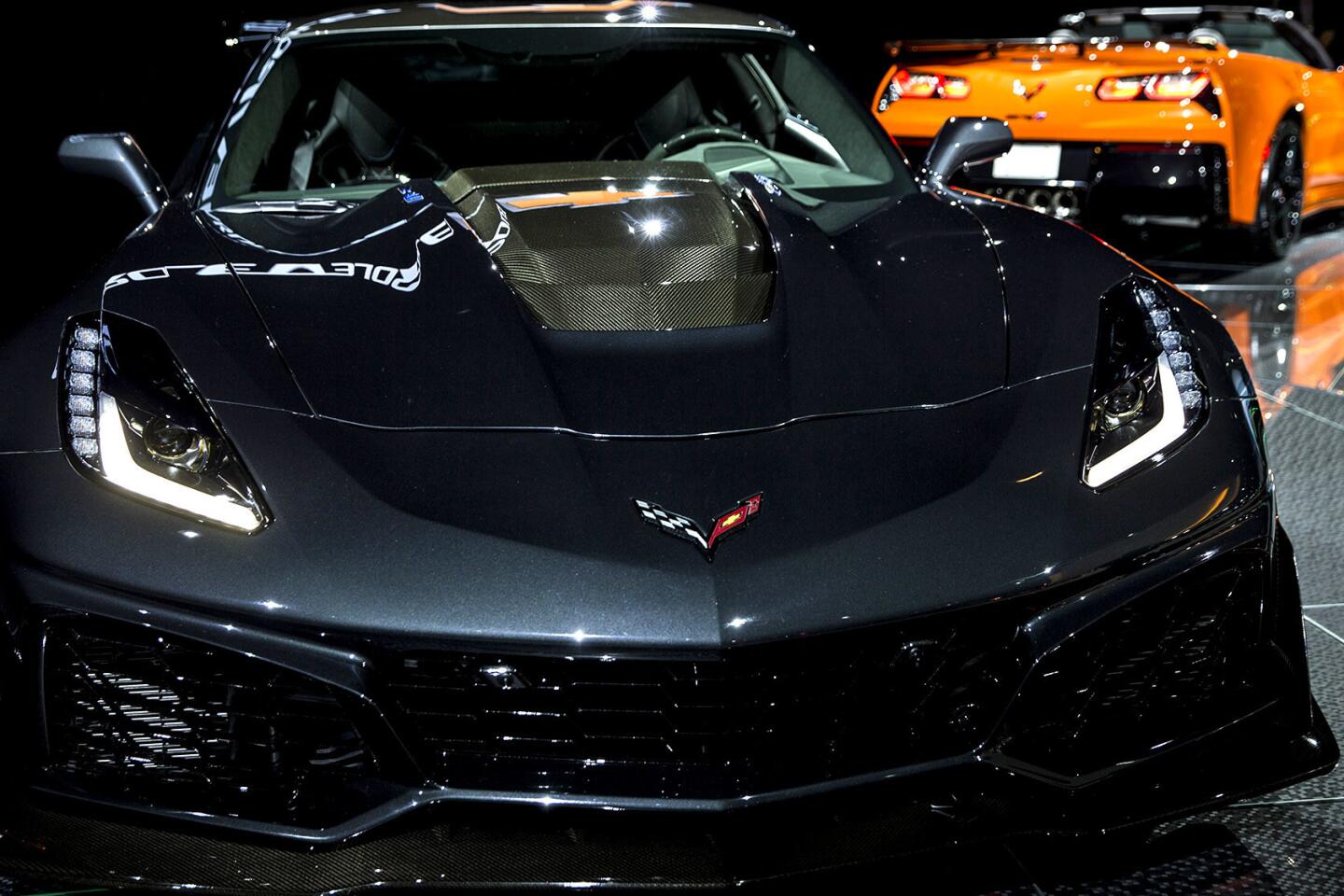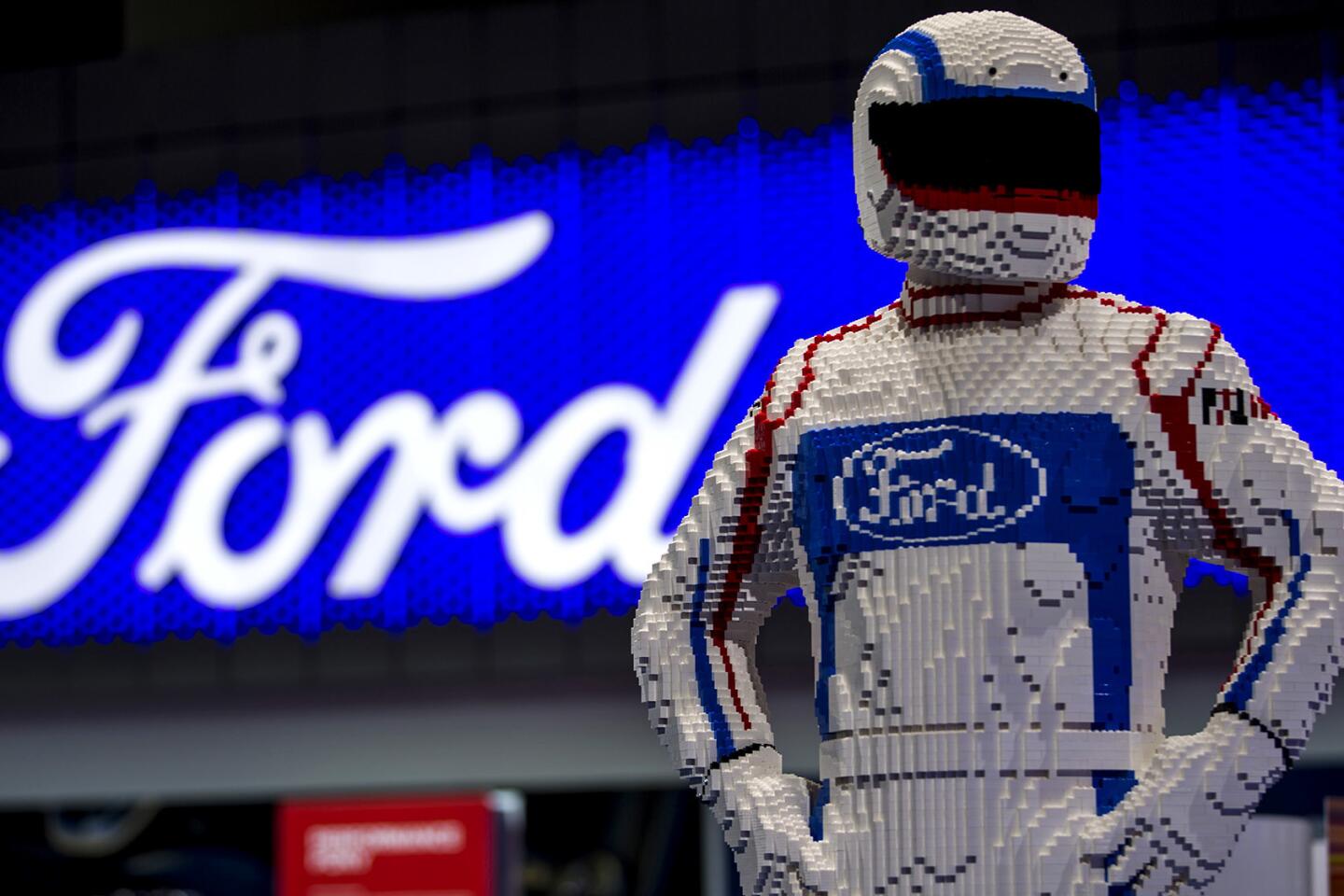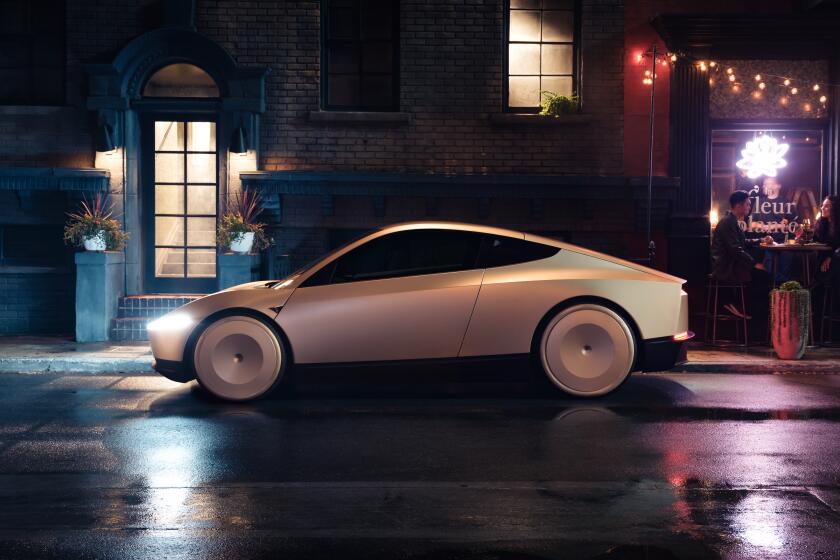What to expect at the L.A. Auto Show

The century-old L.A. Auto Show, which opens its 10-day run Friday, is one of the largest, longest-running and most popular car exhibitions in the world.
The 110th edition of show at the Los Angeles Convention Center draws not only thousands of car fans but also a huge contingent of industry workers and automotive and technology journalists who want a close-up look at the newest things on wheels.
During the four days leading up to the show’s public opening, the center hosted a companion program called AutoMobility LA, which included the unveiling of new models and conferences led by officials from automakers and the tech firms whose products are helping create the cars of the future.
Helping guide the exhibit is Lefteris Tsironis, the show’s director of experiential marketing and communications. We asked Tsironis, whom everyone calls Lefty, to talk about the show and why it remains so popular. Here’s a transcript edited for space:
How many vehicles can people see?
Nearly 1,000 vehicles are on display during the public days of the show, and there are about 70 [all-new] debut vehicles that will be on the floor.
What will be the attendance across the 10 days?
We don’t publish the numbers exactly, but we have hundreds of thousands of people coming to the show. And year to year, it’s been pretty consistent over the decades.
Last year, we had more than 5,000 journalists come to the show from 65 countries. About 20,000 industry professionals also come.
Do car shows like this really help sell cars?
They absolutely do. This is the No. 1 car-buying market in the United States, according to J.D. Power & Associates — this is the most influential market. We have car shoppers who are looking to come into an environment with no hassles, where they can ask a million questions, get in all of [the vehicles] and this is a place where influence happens.
What are the main reasons people come to the auto show?
People want to know what’s hot, what’s new, what they can get, what’s on the road, the tech behind it. Secondly, people want something to do and explore, and this [show] is super accessible. People from all walks of life and every age, and it’s very affordable, for $12 or $15, depending on which day you come.
They spend an average of four hours exploring. There are test drives, there are attractions, there are customizers, tuners and there is the overall car culture involved, so it really taps into Hollywood and Southern California.
And no pressure from a salesperson on the lot?
If you are a car shopper, you come here into a zero-hostile environment. The product specialists are professionals, and they are fully educated as to all the specifications and capabilities of these vehicles, especially the tech-heavy cars of today that are semi-autonomous and electrified.
The tech aspect is huge now, right, with semi-autonomous cars, electric and hybrid vehicles and collision-avoidance features?
The L.A. Auto Show, including AutoMobility LA, is a unique bird because it was the first global show that said we’re going to bring together the worlds of auto and tech.
It’s not a traditional auto show. It’s an experience where you can have the CEOs of Lyft, Intel, Panasonic, Waymo all come here to break news. We have Pizza Hut and Domino’s coming here. Why? They’re looking at autonomous fleets.
Why is the public show 10 days instead of, say, just one weekend?
There’s, what, 10-plus million people in Los Angeles, and this is the No. 1 car-buying market in the world. This is where car culture lives. The [automakers’] advanced-design studios are here in Southern California. So, we don’t have lull days. If we were seeing we had lull days, we would obviously edit the show. But we’re busy.
Twitter: @PeltzLATimes
More to Read
Inside the business of entertainment
The Wide Shot brings you news, analysis and insights on everything from streaming wars to production — and what it all means for the future.
You may occasionally receive promotional content from the Los Angeles Times.


